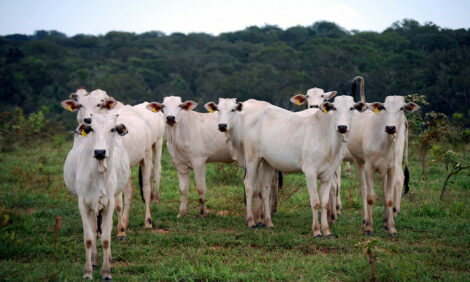



How Important Is Feedlot And Carcase Data?
US - The primary goal of every cow/calf producer should be to get each cow to raise a healthy calf to weaning every year, says Grant Crawford from the University of Minnesota Beef Team.Between the initial task of breeding cows and maintaining pregnancy, having a live, healthy calf at birth, keeping the calf healthy and growing, and then successfully weaning the calf, there are a number of places along the way where this goal can be missed.
For too many cow/calf producers, however, the process ends when the calves are sold dafter weaning.
To truly understand the quality of the calves produced, cow/calf producers should consider following their calves further down the production chain to determine how well they perform in the feedlot and what type of carcases they produce. Through utilization of feedlot performance and carcass data, cow/calf producers can see if the traits they select are being expressed down the line.
When cattle buyers are looking for calves to place into feedlots, they are looking for a number of positive traits: uniform groups, healthy, pre-weaned, ability to gain weight quickly and efficiently, and ability to produce a high-quality carcass.
In general, cattle feeders are looking for value and predictability. It is therefore up to the cow/calf producer to provide calves that meet these expectations.
Some of this can be done through breeding and genetics, but that only provides the input. To accurately determine the output of these genetic and breeding decisions, cow/calf producers need to evaluate what happens after weaning.
There are basically three ways to do this: retain ownership and feed the calves on-farm; track the calves after sale through a relationship with a cattle feeder; or place cattle into a custom feedlot.
Feedlot performance measures that cow/calf producers should utilise are final body weight, days on feed to reach finishing weight, average daily gain, feed intake, feed efficiency, and cattle health.
All of these measurements will help assess the feeding quality of these cattle, and will all affect cost of gain, which is the bottom line for cattle feeding. Utilising these measures can help cow/calf producers determine if the genetics they choose are allowing for fast and efficient growth in the feedlot.
Carcase quality has become increasingly important to cattle feeders due to grid marketing programs that provide premiums for desirable carcase traits. These grids generally emphasise either quality grade, which is determined primarily through assessment of intramuscular fat (marbling); or yield grade, which is basically a measure of the amount of retail yield each carcase produces.
Part of the responsibility for producing quality carcases is on the cattle feeder, who will need to provide optimal nutrition, keep cattle healthy, determine the proper endpoint, and make management decisions on feedstuffs, implants, etc.
Genetic decisions by the cow/calf producer will also play a large role, and quite possibly a larger role than any management decisions made at the feedlot.
The key carcase data measures to evaluate are carcase weight, ribeye area, backfat, marbling score, quality grade, and yield grade. Quality grade and yield grade are both determined by trained USDA personnel, with the quality grades for fed cattle (less than 30 months of age) being USDA Prime, Choice, Select, and Standard.
Fewer than three per cent of fed cattle reach the Prime quality grade, and about 65 per cent of fed cattle are currently reaching the Choice quality grade. Yield grades range from yield grade 1 through 5, with yield grade 1 being the leanest carcass and yield grade 5 being the fattest carcass.
In fed cattle grid marketing systems, the minimum requirement generally is for a carcase that weighs between 550 and 1,000 pounds, and reaches a Choice quality grade with a yield grade of 3. If carcases do not meet these requirements, they will receive discounts, while carcases that grade better than these requirements will receive premiums.
One of the dangers of grid marketing is that the potential discounts are much greater than the available premiums.
For instance, if a carcase has a yield grade of 2, it will receive a premium of approximately $1.80 per 100 pounds of carcase weight. However, if the carcase is a yield grade 4, which is considered to be a lesser yield grade due to a lower percentage of retail cuts, it will receive a discount of approximately $12.50 per 100 pounds of carcase weight.
TheCattleSite News Desk


